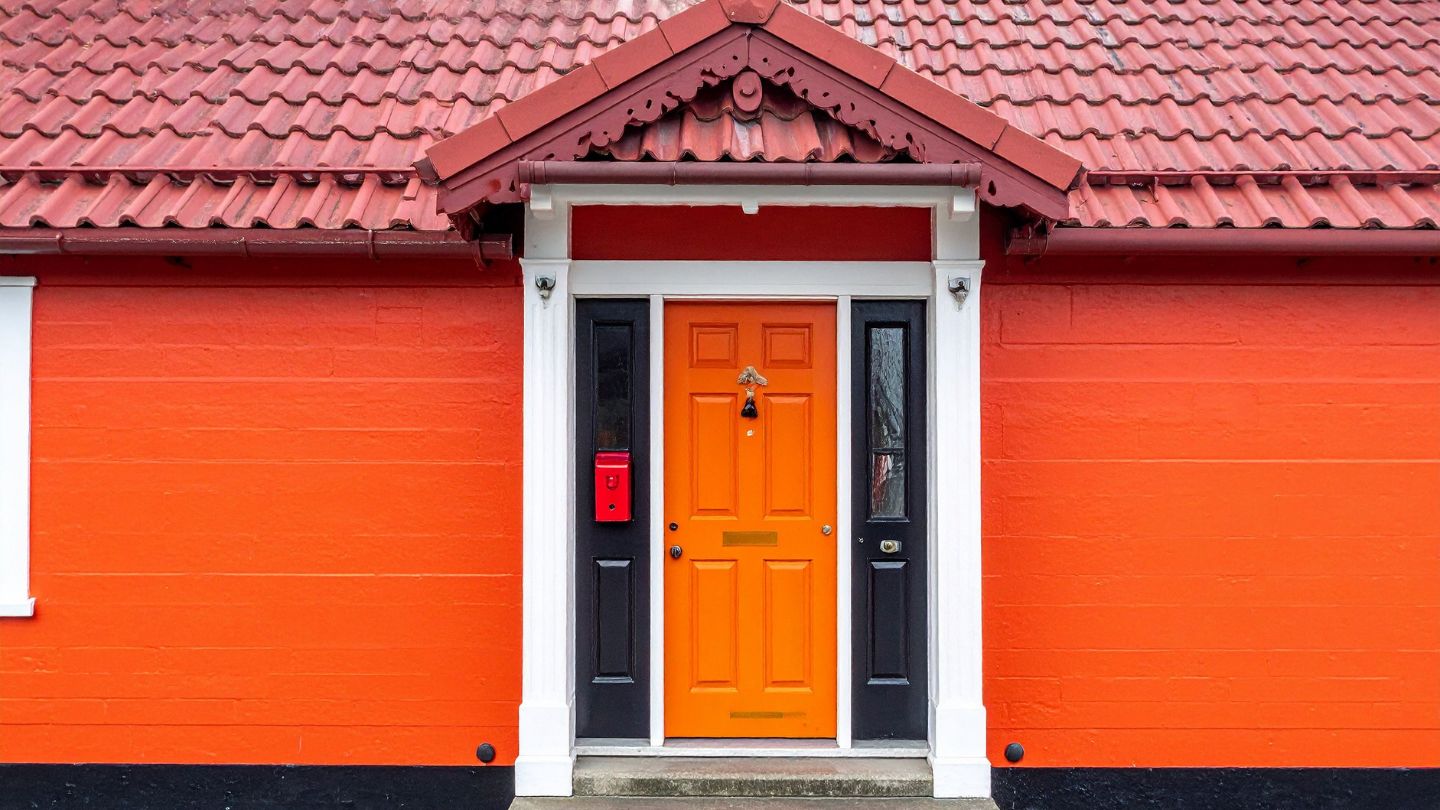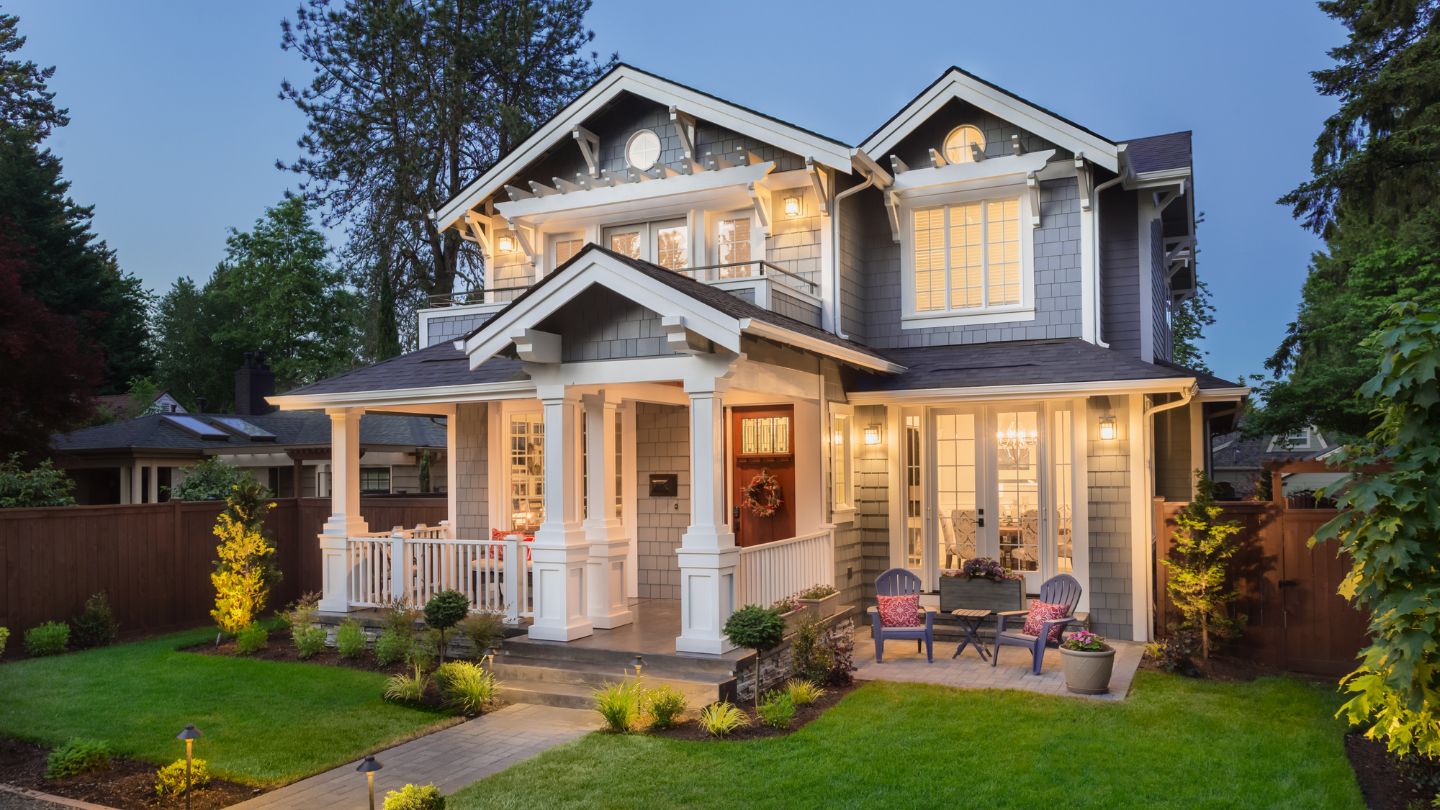
Doors are more than just entry points; they influence how your home looks, feels, and functions. From enhancing curb appeal to improving energy efficiency and sound control, the right doors can significantly impact daily living. Whether you’re building, remodeling, or upgrading, choosing the right doors involves evaluating materials, designs, and installation methods that align with your home's architecture and lifestyle needs.
In this blog, you’ll discover a detailed breakdown of interior and exterior door types, key material comparisons, style considerations, and expert tips to help you make informed decisions with long-term value.
Interior doors play a fundamental role in shaping the look and feel of your home. They are key in controlling sound, light, and airflow, thereby significantly influencing the ambiance and functionality of each internal door.
Common types of interior doors include:
Each offers distinct advantages. Selecting the right interior door involves balancing aesthetics with practicality to enhance your home’s overall design.
Solid core doors are renowned for their durability and exceptional sound-dampening capabilities, making them an ideal choice for bedrooms and offices where privacy and noise control are paramount. These doors are constructed with a full-material interior that significantly reduces noise transmission between rooms. Although more expensive, solid-core doors provide a robust solution for high-traffic areas that demand longevity and sound insulation.
Hollow core doors are a cost-effective alternative with the following characteristics:
The choice between solid-core and hollow-core doors ultimately depends on your specific needs and budget. Solid core doors are ideal for spaces where sound reduction and durability are critical, while hollow core doors are an affordable solution for less demanding applications.
Specialty interior doors like bi-fold doors, pocket doors, and sliding barn doors can add unique character and functionality to your home. Here are some details about bifold doors:
Pocket doors, which slide on a track and retract into the wall, offer a space-saving solution that is both practical and stylish. These doors take up less space compared to traditional hinged doors, making them perfect for small rooms or areas where space is at a premium.
Sliding barn doors, hanging from a track above the opening, have gained popularity for their aesthetic appeal and functional benefits. These barn doors not only save space but also add a rustic or industrial charm to any interior.
Accordion doors and other specialty doors can transform ordinary spaces into distinctive environments that reflect your personal style. When you decide to choose doors, you enhance the overall aesthetic and functionality of your space.

Exterior doors are the guardians of your home’s exterior, providing security, weather protection, and creating a lasting first impression. Selecting an exterior door requires considering materials that offer durability and resistance to the elements, just like a front door.
Thinking about curb appeal? Selecting the best front entry door color can make a dramatic impact on your home's first impression, balancing personal style with neighborhood aesthetics.
Fiberglass, steel, and wood are common choices, each with its own set of benefits and maintenance requirements.
Fiberglass doors are known for:
Steel doors, on the other hand, are valued for:
While both fiberglass and steel doors offer enhanced security, steel doors are typically more affordable and provide a higher level of protection against forced entry.
Entry door systems often come with additional features like sidelights and transoms, which not only improve the door’s functionality but also enhance its curb appeal. These entryway door systems can create a more inviting and visually appealing front entry door, making a strong first impression on visitors.
High-performance entry systems often include sidelights, transoms, and reinforced frames. Multi-point locking systems further enhance security. And before making any changes, be sure to review what to consider when replacing your entry door, from choosing the right material to ensuring it’s installed for maximum security and insulation.
When choosing doors, several key factors must be considered to ensure they meet your needs and complement your home’s design:
The performance features and maintenance requirements of different door materials should align with your specific application needs.
Energy efficiency is crucial, especially for exterior doors. Insulated doors help maintain indoor temperatures by minimizing heat transfer, leading to significant energy savings.
Entry door systems designed for energy efficiency often include pre-hung door frames and components that contribute to better temperature control within the home.
Security is paramount when selecting entry doors. Solid locking mechanisms and reinforced frames are essential for protecting against unauthorized access.
Composite doors, with their advanced locking systems, and steel doors, known for their robustness, are excellent choices for enhancing home security.
Read more: How to Enhance Home Security with Patio Doors in Dayton?

Matching doors to your home’s architectural style is crucial for creating a cohesive and harmonious look. Whether your home has a contemporary or traditional design, selecting doors that complement your aesthetic while meeting practical needs is essential.
Testing door samples in your space ensures compatibility with your home’s style and lighting.
Contemporary door styles often feature minimalistic designs with clean lines and flush glass panels. Fiberglass doors are particularly versatile, offering various aesthetic options that can be tailored to modern homes.
These doors can be finished to mimic wood, providing a sleek yet warm appearance.
Traditional door styles, such as Colonial doors, emphasize symmetrical designs with flat or raised panels. These solid wood doors are a popular choice for farmhouse-style homes, offering a classic and timeless appeal.
The six-panel door is particularly common in America, reflecting its historical significance and enduring popularity. Six-panel doors are a popular choice for many homeowners.
Accurately measuring door openings is crucial for ensuring a proper fit and preventing issues during installation. Evaluating the condition of existing doors can help identify the best replacement options and avoid potential installation problems related to door opening.
Installing a basic interior door yourself is feasible with the right tools and knowledge. Essential tools for DIY door installation include a level, a tape measure, and screwdrivers.
While professional help is recommended for exterior doors, tackling interior doors can be a rewarding home improvement project.
Hiring professional installers ensures accurate measurements and a smooth, efficient process. Professionals have the expertise to handle complex installations, particularly for exterior doors, guaranteeing a perfect fit and reducing the likelihood of future issues.

When planning an outdoor upgrade, understanding the best types of patio doors and how to pick the right one helps you choose between sliding, French, and bi-fold options that suit both form and function.
Specialty doors can significantly enhance both the visual appeal and functionality of your home. These doors improve aesthetics and allow for better light and airflow.
If you’re still comparing options, it’s worth taking time to discover what the different types of patio doors are for your home, especially if layout, light control, and energy efficiency are priorities.
French doors are celebrated for their elegant appearance, featuring glass panes that allow natural light to flood into your home. Ideal for creating a welcoming entrance or connecting indoor and outdoor spaces, French doors operate via hinges, providing easy access and a sense of openness.
Sliding doors are a practical and stylish choice for maximizing floor space. These doors slide horizontally on a track, making them perfect for tight spaces and smaller yards.
Sliding doors are commonly used for patio doors and indoor-outdoor living areas, offering a seamless transition between outdoor spaces and indoor spaces.
Selecting the right material for your doors is crucial for ensuring longevity, maintenance, and aesthetic appeal. Wooden doors, composite doors, and other materials each offer unique benefits suited for different applications.
Wooden doors provide a timeless appeal and are highly customizable, making them suitable for both interior and exterior use. With options ranging from solid wood to wood veneer and MDF, homeowners can select the best fit for their style and budget.
Composite doors, made from a blend of materials like timber, fiberglass, and PVC, offer enhanced durability and low maintenance. These doors can last between 20 and 35 years with proper care, making them an ideal choice for exterior applications.
When choosing doors, consider the following:
Testing door samples in your home environment allows you to see how a door fits and looks with your existing décor before making a final decision. Evaluating various designs and materials ensures the final choice is both practical and aesthetically pleasing.
Soundproofing is crucial for maintaining privacy and reducing noise in specific areas of your home, such as bedrooms and home offices. Solid core doors can significantly enhance sound insulation compared to hollow core doors.
Selecting the ideal doors for your home requires thoughtful evaluation of interior and exterior options. This guide has explored everything from interior door styles and materials to energy-efficient entry systems, offering insights on soundproofing, installation methods, and style compatibility. Whether you're upgrading for function or design, the right door can significantly elevate your home's look and performance.
For homeowners seeking reliable entry doors in Troy, Dayton Door Sales offers expertly crafted solutions tailored to security, aesthetics, and energy efficiency. Trust our expertise to help you choose doors that enhance curb appeal while meeting the demands of your lifestyle.
Solid core doors provide superior sound insulation and durability, making them preferable for privacy in high-traffic spaces, whereas hollow core doors are lighter and more affordable, ideal for low-traffic areas such as closets.
To choose the right exterior door material, evaluate your climate, budget, and maintenance preferences. Fiberglass offers durability and weather resistance, steel ensures high security, while wood delivers a classic aesthetic but demands more upkeep. Ultimately, select the material that best aligns with your needs and lifestyle.
Entry door systems provide enhanced functionality and aesthetic appeal through features such as sidelights and transoms, while also offering improved security with reinforced frames and advanced locking mechanisms. This combination makes them an excellent choice for both safety and style.
Energy efficiency is crucial in door selection as it minimizes heat transfer, leading to substantial energy savings and enhanced indoor comfort. Choosing an energy-efficient door can significantly contribute to maintaining stable indoor temperatures.
To ensure your new doors match your home's style, test door samples in your space to evaluate how their designs, colors, and materials complement your existing décor and lighting. This approach will help you achieve a cohesive and harmonious look.